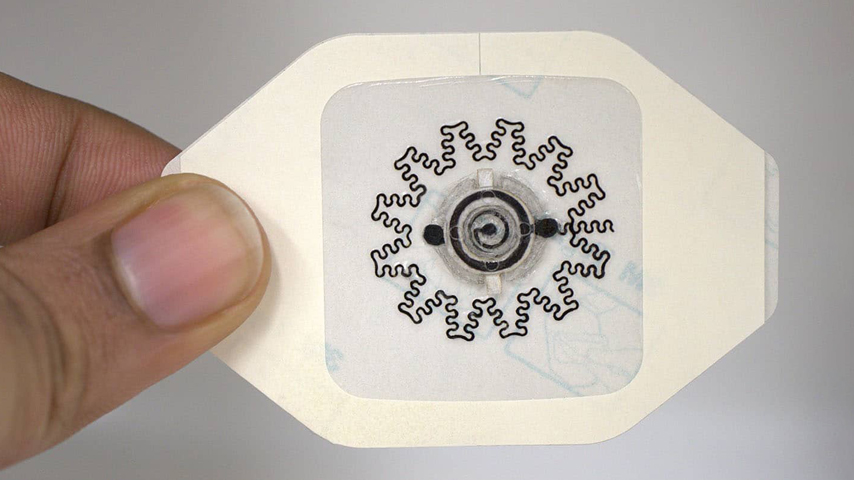Reprograming MRI to Light up Cancer
Reprograming MRI to Light up Cancer


New MRI technique illuminates cancerous growths on scans.
Cancer screening isn’t perfect. Mistakes can lead to over-diagnosis, and subsequently to dangerous over-treatment or missed masses altogether, with obvious negative consequences.
Prostate cancer, for instance, is the most prevalent form of cancer among men. Blood test screening, the common prostate-specific antigen test, has a false positive rate of 70 percent. Ultrasound can miss a tumor entirely, and MRI, the most expensive of the three, only succeeds about 94 percent of the time.
“With existing modalities, there are quite a number of situations where you just can’t see it, where it just appears as normal tissue,” said Alexander Wong, a professor of systems design engineering at Canada's University of Waterloo.
Wouldn’t it be nice if a doctor could scan a patient and any cancer would just light up?
Wong has created just such a system. It uses existing MRI machines without altering their hardware, and initial studies show that it beats all other screening tests for accuracy.
“Our hypothesis was that cancerous tumors have a very irregular packing of cells,” Wong said. “The way water moves through it will be quite different than for healthy tissue.”
By varying the timing and strength of gradient pulses during multiple signal acquisitions and mixing the resultant signals, Wong was able to create a signal for cancerous tissue that was easy to recognize. He calls the technique synthetic correlated diffusion imaging.
“When a doctor looks at the image, they will actually see a very big difference,” he said. “The cancer will appear to be lighting up.”
More for You: Hands Off Medical Imaging
The more irregular the flow of water through the tissue, the brighter the image.
Such a method would make cancer detection quicker, easier, and more accurate. It would also be useful for more targeted treatment. With a map of exactly where a cancer is in an organ, surgeons could more precisely remove cancerous cells, leaving as much healthy tissue as possible. What’s more, it could help doctors determine whether a treatment is working or not by taking an MRI scan after a procedure.
The study that resulted in the paper “Synthetic Correlated Diffusion Imaging Hyperintensity Delineates Clinically Significant Prostate Cancer,” which appeared in Scientific Reports in March, examined some 200 patients. Wong plans to follow up that study with one of much greater size—thousands of patients—as well as a number of additional studies that would examine other cancers, such as breast and brain cancers.
Initial investigations suggest that all cancers will show as easily as prostate cancer. “The overall trend is that when tissue is cancerous it always has hypersensitivity,” Wong said. “It should be generalizable to other cancers. It’s extremely promising.”
Editor’s Pick: 3D Printing Medical Scans
The development could potentially be even more useful. Different cancers could have different flow signatures, allowing doctors to identify the type of cancer after an MRI scan.
Wong focused on prostate cancer not only for its prevalence, but also because it is a cancer already widely screened with MRI. Little red tape would be needed to implement the new technique.
“All they have to do is use this machine protocol, it terms of pulse sequence, and that’s pretty much it,” Wong said. “But to shift from one modality to another completely different imaging protocol is difficult. There’s a lot of paperwork.”
That’s why lung cancer, which is usually detected with CT scans, is lower on Wong’s list of cancers to look for with his new MRI technique. But if his method should catch on, there’s no reason it couldn’t be used with all kinds of cancer, including lung cancer.
“These are areas I’d love to explore down the line,” he said. “For me it’s really about taking fundamental science and bringing it to impact the real world. Being able to help people is very gratifying.”
Michael Abrams is an engineering and science writer in Westfield, N.J.
Prostate cancer, for instance, is the most prevalent form of cancer among men. Blood test screening, the common prostate-specific antigen test, has a false positive rate of 70 percent. Ultrasound can miss a tumor entirely, and MRI, the most expensive of the three, only succeeds about 94 percent of the time.
“With existing modalities, there are quite a number of situations where you just can’t see it, where it just appears as normal tissue,” said Alexander Wong, a professor of systems design engineering at Canada's University of Waterloo.
Wouldn’t it be nice if a doctor could scan a patient and any cancer would just light up?
Wong has created just such a system. It uses existing MRI machines without altering their hardware, and initial studies show that it beats all other screening tests for accuracy.
“Our hypothesis was that cancerous tumors have a very irregular packing of cells,” Wong said. “The way water moves through it will be quite different than for healthy tissue.”
By varying the timing and strength of gradient pulses during multiple signal acquisitions and mixing the resultant signals, Wong was able to create a signal for cancerous tissue that was easy to recognize. He calls the technique synthetic correlated diffusion imaging.
“When a doctor looks at the image, they will actually see a very big difference,” he said. “The cancer will appear to be lighting up.”
More for You: Hands Off Medical Imaging
The more irregular the flow of water through the tissue, the brighter the image.
Such a method would make cancer detection quicker, easier, and more accurate. It would also be useful for more targeted treatment. With a map of exactly where a cancer is in an organ, surgeons could more precisely remove cancerous cells, leaving as much healthy tissue as possible. What’s more, it could help doctors determine whether a treatment is working or not by taking an MRI scan after a procedure.
The study that resulted in the paper “Synthetic Correlated Diffusion Imaging Hyperintensity Delineates Clinically Significant Prostate Cancer,” which appeared in Scientific Reports in March, examined some 200 patients. Wong plans to follow up that study with one of much greater size—thousands of patients—as well as a number of additional studies that would examine other cancers, such as breast and brain cancers.
Initial investigations suggest that all cancers will show as easily as prostate cancer. “The overall trend is that when tissue is cancerous it always has hypersensitivity,” Wong said. “It should be generalizable to other cancers. It’s extremely promising.”
Editor’s Pick: 3D Printing Medical Scans
The development could potentially be even more useful. Different cancers could have different flow signatures, allowing doctors to identify the type of cancer after an MRI scan.
Wong focused on prostate cancer not only for its prevalence, but also because it is a cancer already widely screened with MRI. Little red tape would be needed to implement the new technique.
“All they have to do is use this machine protocol, it terms of pulse sequence, and that’s pretty much it,” Wong said. “But to shift from one modality to another completely different imaging protocol is difficult. There’s a lot of paperwork.”
That’s why lung cancer, which is usually detected with CT scans, is lower on Wong’s list of cancers to look for with his new MRI technique. But if his method should catch on, there’s no reason it couldn’t be used with all kinds of cancer, including lung cancer.
“These are areas I’d love to explore down the line,” he said. “For me it’s really about taking fundamental science and bringing it to impact the real world. Being able to help people is very gratifying.”
Michael Abrams is an engineering and science writer in Westfield, N.J.




